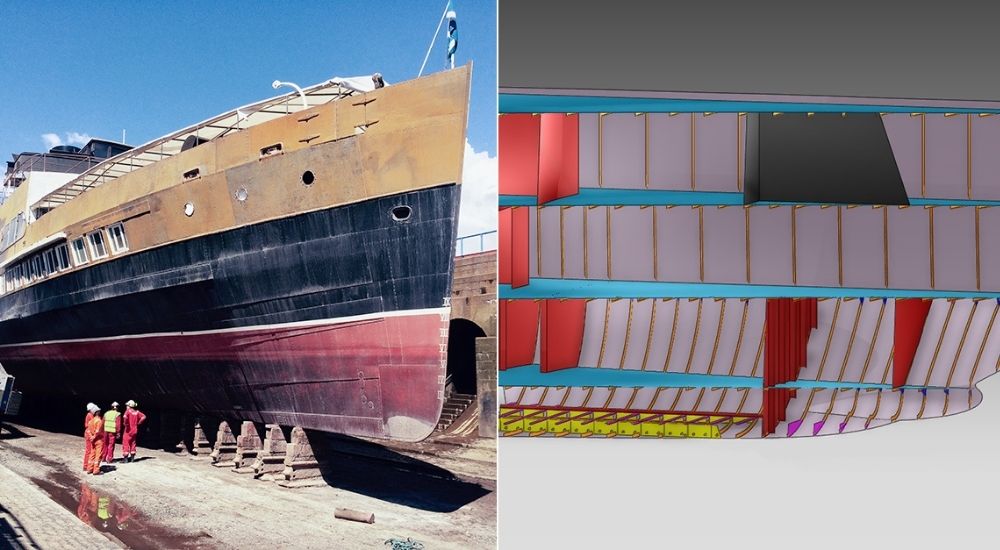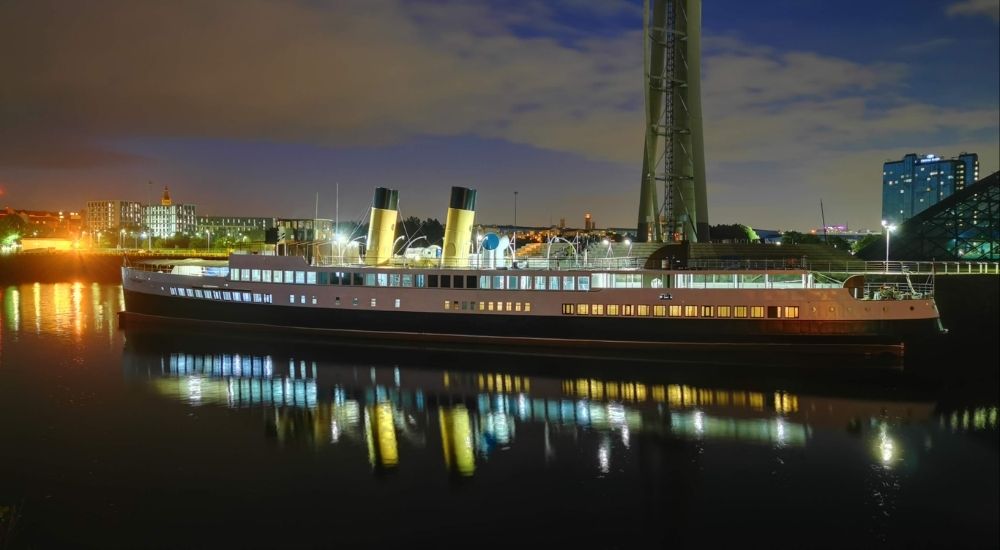Rebuilding a historical ship through its digital twin

In today’s rapidly advancing times, the marine sector has remained one of the world’s most critical and resilient industries. While over two centuries have passed since the launch of the first commercial steamboat, over 90% of global goods and trade are still seaborne today.
The marine industry has retained its position as a vital economic driver, as well as being an essential contributor to national defence forces and the tourism industry.
As the world becomes hyper-networked, the shipping industry is becoming radically modernised. The sector faces twenty-first century challenges of business agility, squeezed margins, sustainability and managing uptime and maintenance – as well as supply chain disruption amid the pandemic.
This is where innovative and advanced ship building technology represents a game changer for the industry.
Today it’s possible for ship makers and marine companies to powerfully optimise the end-to-end journey from vessel development to seaborne operations by leveraging technology, such as cloud, sensors, AI, and data analytics.
The latest solutions enable the marine sector to more effectively execute projects, providing industry-tuned features to connect the business-critical processes of engineering, design, materials, planning and construction.
What’s more, such technology can turn data into insights for downtime analysis, monitor schedules and digitise maintenance procedures – all while connecting the workforce in unprecedented ways.
A very colourful example of the power of marine technology can be seen in the recent reconditioning of the glorious TS Queen Mary. The iconic steamship transported more than 13,000 passengers in her native Scotland in the years after she was built in 1933.

But in the coming months, the long-retired vessel will roar back to life as a heritage destination and educational maritime experience for schoolchildren and tourists, having been rescued by a diverse ensemble that includes the Princess Royal and industrial software firm AVEVA.
The TS Queen Mary finally returned to Princes’ Dock in Glasgow in 2016 after 40 years away for a new role befitting of her regal status – to reconnect visitors with one of the most pivotal periods in British history. Today the much-loved vessel, as a member of the Core 40 fleet of the UK’s National Historic Ship register, is in the midst of a very high tech £3.5 million facelift.
AVEVA is supplying the steamship with its purpose-built solution for shipbuilding, which offers integrated 1D, 2D and 3D engineering and design tools. The pro bono contribution will support the Friends of TS Queen Mary charity and naval architects Brookes Bell in reconditioning the steamer.
As a shining example of the UK’s history of innovation, the vessel is ripe for being restored with the aid of state-of-the-art software. Friends of TS Queen Mary and Brookes Bell chose AVEVA’s shipbuilding solution to capture the complex shapes of her design to help with the preservation process.
AVEVA’s advanced shipbuilding software has enabled the original vessel structure to be 3D-modelled accurately into a digital twin, which seamlessly links the constantly updated model to construction and production drawings, so shipyard production information for replacement parts can be efficiently produced.
As a 90-year-old vessel, the ship’s deteriorated riveted structure must be replaced with the modern welded equivalent and sympathetically integrated into the original structure’s remains. The exterior planked wooden decks are no longer weather-tight, and the structure needs to be reverse engineered to allow steel renewal.
The use of a digital twin allows the ship’s design and construction engineers to quickly identify design changes, work with design teams around the world, achieve 3D coordination early in the design phase, and revise drawings that have been mapped directly to the 3D model.
Also being used on the TS Queen Mary is AVEVA’s cloud-enabled 3D data capture solution for registering, processing and visualising point cloud, 3D model data on brownfield, greenfield and maintenance projects. This ensures the digital and physical representations are aligned for optimum decision making, reduced project rework and improved asset safety.
The tale of the TS Queen Mary is a charming example of how technology
can drive design improvements when restoring history for the benefit of future generations. It also highlights multiple future use cases. Digital twin technology is set to transform the marine industry through the enablement of seamless maintenance, repair and operations activities.
The 3D representation platform is primed for becoming an integral add-on when handing over new ships in the coming years. What’s more, digital twin technology could also generate fresh MRO revenue streams for shipyards that are increasingly facing tighter margins.
When the newly restored TS Queen Mary is finally unveiled, she will not only revive a slice of nautical history, she will also offer a live insight into how technology is transforming the future of the marine industry through disruptive innovation.

Key takeaways
- AVEVA is supplying purpose-built solution for shipbuilding, which offers integrated 1D, 2D and 3D engineering and design tools.
- AVEVA’s advanced shipbuilding software has enabled the original vessel structure to be 3D-modelled accurately into a digital twin.
- The use of a digital twin allows the ship’s design and construction engineers to quickly identify design changes.
- Design teams around the world, can achieve 3D coordination early in the design phase.
- Also being used on the TS Queen Mary is AVEVA’s cloud-enabled 3D data capture solution for brownfield, greenfield projects.
- This ensures digital and physical representations are aligned for optimum decision making.
- The tale of the TS Queen Mary is an example of how technology can drive design improvements when restoring history.
- Digital twin technology is set to transform the marine industry through the enablement of seamless MRO.
Advanced ship building software has enabled the original vessel structure to be 3D-modelled into a digital twin, explains Hervé Lours at AVEVA.





